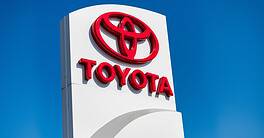Private debt funds, asset-based financiers and family offices fill the gaps left by traditional bank lenders.

Last summer, private equity firm Acharya Capital Partners needed financing for an acquisition. At first, founder and managing partner David Acharya went the traditional route, and approached bank lenders. The responses weren’t great. Plan B proved to be more successful: borrowing from private debt funds.
In 2022, bank lending fizzled and M&A activity plummeted. Russia’s invasion of Ukraine in February, inflationary pressures and rising interest rates, along with tumbling tech and healthcare stocks and a weaker Euro made securing funding in high-yield bond and leveraged loan markets difficult. With traditional paths to financing so narrow, alternative routes gained appeal.
“I got a more positive response and support letters from private debt funds,” Acharya says. “As a private equity investor who was a leveraged-finance banker earlier in my career, I was impressed how the private debt funds stepped up and acted more like a partner than just a lender.”
They were readily able to put pricing to paper, he explains, more collaborative during the indication of interest process and even accompanied him on management presentations. Acharya calls them a “big advantage” during the “ups and downs” of the current credit cycle.
He’s not alone. According to PitchBook, global private debt fundraising activity touted a record-setting pace in 2021 and slowed down only slightly in the more subdued atmosphere of 2022, making it one of the more viable options for deal professionals to secure financing. In the first six months of 2022, 66 private debt funds raised a total of $82 billion—compared with the roughly $93 billion collected across 130 vehicles in the same period in the prior year.
While data was not yet available for the second half of 2022, at least one deal illustrated that the trend was continuing. In December, Atlanta-based marketing firm Mastermind Inc. tapped Noble Capital Markets to advise the private placement of up to $10 million in debt-related financing to support its acquisition plans, including the purchase of a California rival, Palms Boulevard.
Direct lending, the largest private debt category, represented over a third of capital raised in the first six months of 2022. Other strategies—in particular credit special-situations—also received strong investor interest, PitchBook noted.
Sung Pak, who heads up the special-situations group at law firm Paul Weiss Rifkind Wharton & Garrison, advises all sorts of capital providers. They typically have flexible mandates and are actually “excited” about finding opportunities—even in tumultuous times, he says, adding, “Issuers and borrowers are understandably taking a ‘wait-and-see’ approach about more expensive capital generally, but deals are getting done.”
Another category is asset-based financing, an alternative for some businesses because it leverages the value in the assets that a company owns to create liquidity. For any company that might be nervous about cost of capital or “financeability” in this market, asset-based financing doesn’t fit into a typical mold—and that’s a good thing, Pak explains.
“Smart capital providers are willing to look at bespoke structures, whether that be recurring revenue deals or structured financings, that can replace or fit into cash-flow-based capital structures,” he says.
As specific needs arise, whether for working capital bridge financings, growth capital, acquisitions or approaching debt maturities, companies that are “fundamentally financeable” are often still able to field multiple financing bids.
This trend isn’t exclusive to the US. All across the globe, the private capital market is filling gaps left by traditional lenders. And in each jurisdiction, there are unique challenges specific to, say, the market for real-estate financings in China; the supply-chain financings linking Asia and Europe; or energy financings in Latin America, Pak adds.
“We do see a more developed market for deploying private capital in the US and, to a lesser extent, Europe, but private capital is more suited to providing capital solutions in challenging markets,” he adds. “We’ll be seeing the growth of private capital in all geographies sooner rather than later.”
There are other funding providers capitalizing on current market conditions as well.
Family offices, for example, have seen an uptick in popularity when it comes to M&A due to their flexibility.
They want to “innovate and make capital available,” Amax Capital managing partner Amit Thakur says.
Recall in December, when biotech giant Amgen Inc. acquired Dublin-based Horizon Therapeutics in a blockbuster $28-billion transaction. Forbes estimated that the family office of John Paulson—which owned more than 6 million shares of Horizon—made $500 million off the deal.
It’s worth noting that Paulson converted his hedge fund to a family office back in July 2020, citing economic conditions at the time. A coterie of billionaires—the likes of Carl Icahn, George Soros, and Stanley Druckenmiller—did the same with their respective firms in 2013, elevating the family-office practice into something more akin to a hedge fund.
“From creating new flexible-but-expensive funding structures for large corporates to increasingly making direct investments into early-stage companies, we have noticed family offices becoming more salient across the landscape,” Thakur says.
Looking Ahead
It remains to be seen whether the tightness in the funding markets will continue throughout 2023 as they did in 2022. Acharya expects they will—at least until the Fed reverses course on interest rate hikes to fight inflation.
“Odds are that the ‘wait and see’ approach taken by lenders and borrowers alike will continue through 2023,” he says. “Given that type of environment, I expect my fellow private equity sponsors will continue to look to the private credit market to provide a much-needed financing source.” Lenders likely will continue to be selective about where they deploy their funds and the size of their respective commitments, he adds. Thakur agrees, expecting rates to increase over the next few quarters before leveling off.
“This level of cost of capital has been unknown to a lot of corporations,” he says. What’s needed is “a recalibration” of capital strategies and priorities.
“So, it is perfectly conceivable—indeed, evident—that the demand for capital will also start weakening,” he says. “For instance, we have seen prime corporates elongating payment terms to their vendors in some cases by as much as six months.”
And regarding sources of capital, Thakur stresses that it isn’t a case of whether there is not enough availability in the system. “It is more a crisis of confidence on the allocators’ part than one of availability,” he says. Confidence cratered as the average active investor’s portfolio is down about 30% globally in 2022, according to Vanda Research. “With the start of the new year, many funds will be able to restart investments after closing the books and making peace with the portfolio losses,” Thakur adds.
Still, there is plenty of dry powder for dealmakers. “As someone who talks to providers of capital all the time, my view is that there is no shortage of available capital,” Pak says. “All of the uncertainty in economic and geopolitical conditions has resulted in a temporary mismatch between supply and demand for capital, but as some kind of ‘new normal’ emerges, activity levels will pick up, particularly outside of the public equity markets.”



